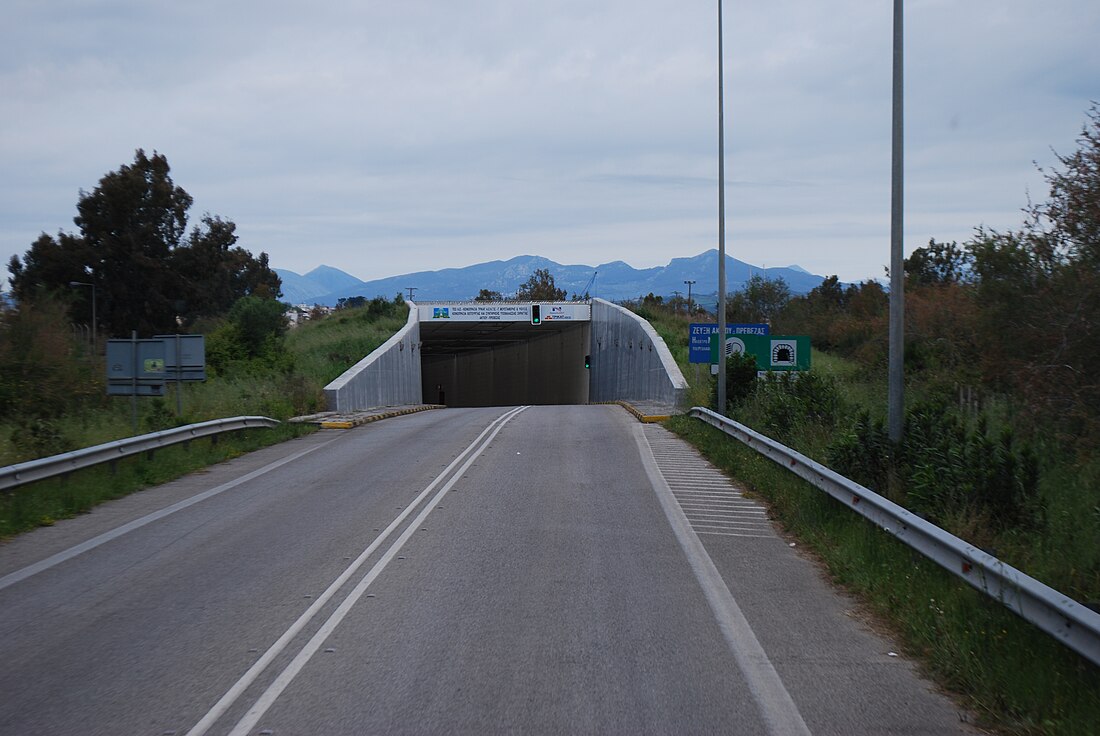Aktio–Preveza Undersea Tunnel
Road tunnel in Greece From Wikipedia, the free encyclopedia
The Aktio–Preveza Undersea Tunnel is an undersea road tunnel across the mouth of the Ambracian Gulf in western Greece. It links Epirus and the city of Preveza on the north shore of the gulf with the cape of Aktio (Actium) in Aetolia-Acarnania, in Central Greece. Completed in 2002, the tunnel is an important piece of infrastructure in an underdeveloped region, and greatly shortens the travel distance between the two sides of the gulf, which had been only possible by ferry. It is the only undersea tunnel in Greece.[1][2][3]
 | |
| Overview | |
|---|---|
| Location | Ambracian Gulf |
| Coordinates | Preveza: 38°56′57.54″N 20°44′46.87″E Aktio: 38°56′38.42″N 20°45′50.18″E |
| Status | Active |
| Start | Epirus, Greece |
| End | Preveza, Greece |
| Operation | |
| Opened | 2002 |
| Owner | Greek Government |
| Operator | Egnatia Odos S.A |
| Character | Drive through |
| Technical | |
| Line length | 1,570 m (5,150 ft) |
Technical characteristics
The tunnel has a total length of 1570 metres and consists of:[1]
- An underwater section of total length 909 metres.[1]
- A cut and cover section of length 509 metres on the north (Preveza) side.[1]
- A cut and cover section of length 152 metres on the south (Aktio) side.[1]
The tunnel has a cross-section height of 8.6 metres and width 12.6 meters.[1] The clearance width is 10.6 metres and clearance height is 5.4 metres. The tunnel is a dual way carriage way and includes a 4.0 metre-wide side lane and a 1.3 metre wide pedestrian sidewalk in each direction.
Construction
Construction of the tunnel was a joint venture between Christiani & Nielsen and the Athens-based Technical Company of General Construction (TCGC). The architects of the tunnel were the Copenhagen-based Comar Engineers A/S, and Doxiadis & Zannis of Athens. The contracts was awarded in 1995, and construction was turned over to the Greek Ministry of the Environment, Physical Planning and Public Works in 1999. The tunnel was completed in 2002.[1]
Special techniques used
The tunnel is built in an area of severe seismic activity featuring complex geo-technical conditions. As a result, the tunnel contains a number of advanced features, such as stone columns underneath the tunnel to help it withstand soil liquefaction during an earthquake.[1]
Costs and toll
The total construction cost was approximately 90 million euros.[4] The current toll is 3 euros.[5]
References
Wikiwand - on
Seamless Wikipedia browsing. On steroids.
